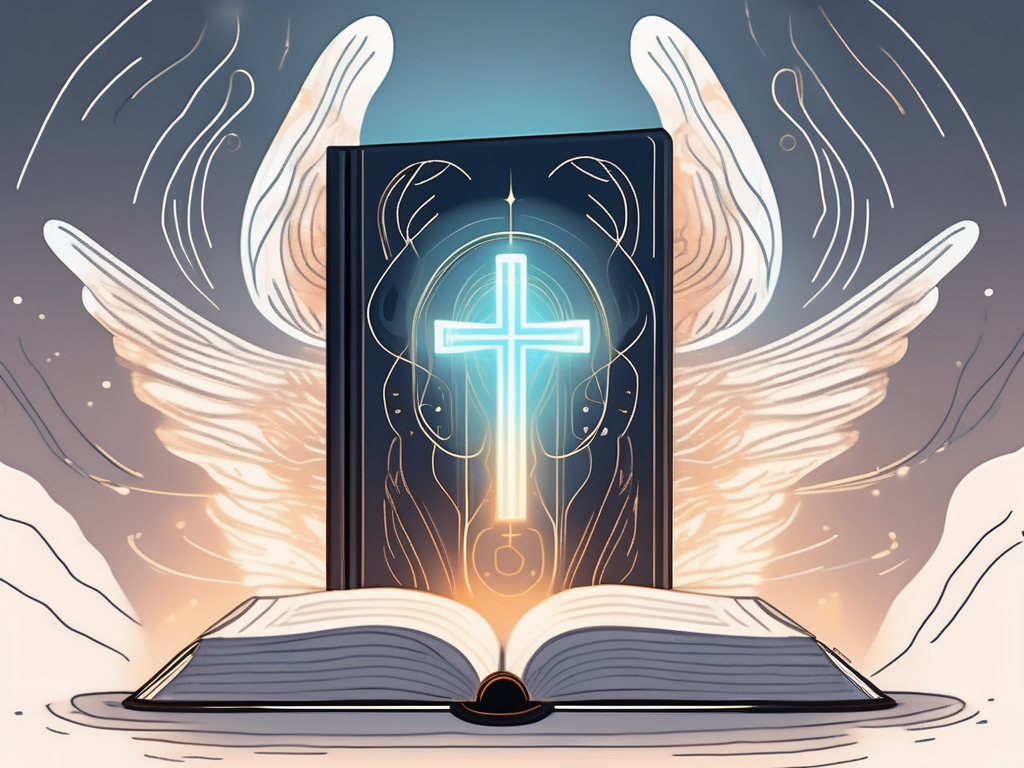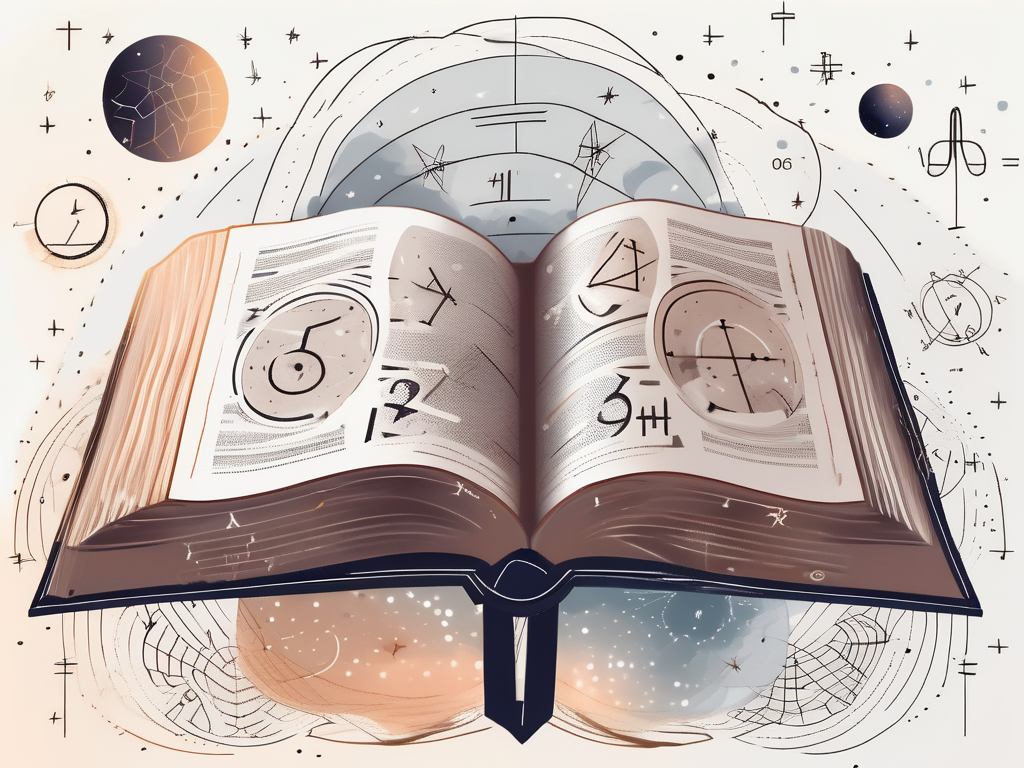The Torah, the sacred text of Judaism, holds deep meaning and symbolism for its followers. Understanding its significance is key to comprehending the foundations of this ancient faith. In this article, we will embark on a journey to explore the multiple layers of meaning found within the Torah and its relevance in modern times.
Understanding the Torah: A Brief Introduction
Before delving into the significance of the Torah, it is crucial to have a basic understanding of what it is. The Torah, also known as the Five Books of Moses, is comprised of Genesis, Exodus, Leviticus, Numbers, and Deuteronomy. It serves as a guidebook for Jewish life, encompassing not only religious rituals and laws but also ethical teachings and narratives of the Jewish people.
In Jewish tradition, the Torah is regarded as the ultimate source of authority. It is believed to have been given by God to Moses on Mount Sinai, making it a sacred covenant between the Jewish people and the Divine.
The Torah in Jewish Tradition
The Torah holds immense reverence in Jewish tradition. It is read publicly during synagogue services, and its words are meticulously studied and analyzed by scholars and everyday believers alike. The act of studying the Torah, known as Torah study, is considered a sacred endeavor that connects Jewish individuals to their heritage and helps them deepen their understanding of their faith.
Each week, a specific portion, known as a Parashah, is read, ensuring that the entire Torah is completed over the course of a year. This regular engagement with the text allows Jews to continually explore its teachings and glean new insights.
Torah study is not limited to a specific age group or gender. From young children learning the stories of Genesis to seasoned scholars delving into the intricacies of Jewish law, the Torah provides a lifelong journey of learning and growth.
Furthermore, the Torah is not seen as a static text but as a living document that speaks to the ever-changing circumstances of Jewish life. It is a source of inspiration, guidance, and moral compass for individuals and communities facing diverse challenges throughout history.
The Five Books of Moses: An Overview
Genesis, the first book of the Torah, tells the story of creation, the origins of humanity, and the beginnings of the Jewish people. It includes accounts of Adam and Eve, Noah and the flood, and the patriarchs and matriarchs, such as Abraham and Sarah.
Exodus recounts the Israelites’ liberation from slavery in Egypt, their journey through the desert, and the reception of the Ten Commandments at Mount Sinai. It is a narrative of deliverance, faith, and the formation of a nation under the guidance of Moses.
Leviticus focuses on the laws of sacrifice and ritual purity. It delves into the intricate details of the priestly duties, the different types of offerings, and the regulations for maintaining holiness within the community.
Numbers tells of the wandering in the wilderness and the census of the Israelites. It explores the challenges faced by the Israelites as they navigate their way towards the Promised Land, including moments of doubt, rebellion, and divine intervention.
Deuteronomy, the final book, revisits many of the laws and includes Moses’ final words to the people before his death. It serves as a reminder of the covenant between God and the Jewish people, emphasizing the importance of obedience and faithfulness.
Each of these books offers a unique perspective on the relationship between the Divine and humanity, providing a comprehensive framework for Jewish life and spirituality.
The Symbolism in the Torah
Throughout the Torah, symbolism plays a significant role in conveying deeper meanings and truths. From numbers to animals and nature, let us explore some of the symbolic elements present in this ancient text.
The Significance of Numbers in the Torah
The Torah employs various numbers to convey symbolic messages. For instance, the number seven, representing completion and perfection, is prominent in the creation narrative, where God rests on the seventh day, known as the Sabbath. The number forty appears frequently, symbolizing a period of transition or testing, such as the forty years the Israelites spent wandering in the wilderness.
Other numbers, such as twelve and forty-nine, also hold symbolic value, representing the twelve tribes of Israel and the fifty-year cycle of the jubilee, respectively. Exploring these numerical patterns adds an additional layer of richness and depth to the text.
The Role of Animals and Nature
Animals and nature are often used metaphorically in the Torah. For instance, the serpent in the Garden of Eden represents temptation and the consequences of disobedience. The Exodus narrative includes the ten plagues, each targeting an aspect of Egyptian life, such as the Nile turning to blood and the swarm of locusts devastating the land. These natural elements serve both as historical accounts and as symbolic representations of the power and justice of God.
Furthermore, animals also play a role in various rituals and sacrifices described in Leviticus, such as the scapegoat symbolically carrying away the sins of the Israelites on the Day of Atonement. They serve as powerful symbols of atonement, redemption, and the connection between humanity and the Divine.
The Torah as a Guide for Life
Aside from its historical narratives and symbolic elements, the Torah offers invaluable teachings on ethics and social justice. It serves as a moral compass for Jewish individuals, guiding them in their interactions with others and their responsibilities towards the community.
Ethical Teachings in the Torah
The Torah contains numerous ethical principles, emphasizing the importance of kindness, honesty, and compassion. It advocates for treating others with respect, providing for the poor and vulnerable, and seeking justice for all. These teachings form the foundation of a just society and promote the well-being of individuals and the community at large.
Central to these ethical teachings is the concept of tikkun olam, which means “repairing the world.” It calls upon Jewish individuals to actively engage in acts of social justice and to work towards making the world a better place.
The Torah’s Perspective on Social Justice
Social justice is a recurring theme within the Torah. It promotes the fair treatment of all individuals, regardless of their social status, and condemns oppression and exploitation. The Torah commands the creation of systems that ensure justice prevails, such as fair courts and laws that protect the vulnerable.
Furthermore, the Torah emphasizes the importance of welcoming strangers and extending care to those in need. It instills a sense of communal responsibility, encouraging Jews to be actively involved in supporting and uplifting the marginalized and disadvantaged.
The Mystical Dimension of the Torah
Beyond its historical and ethical teachings, the Torah also holds a mystical dimension that has intrigued scholars for centuries. Kabbalistic interpretations offer deeper insights into the hidden meanings within the text.
Kabbalistic Interpretations of the Torah
Kabbalah, a system of Jewish mysticism, explores the mystical teachings of the Torah. It seeks to uncover the divine secrets concealed within the text and understand the spiritual realms beyond our physical existence. Kabbalistic interpretations often involve decoding patterns, numerology, and exploring the interconnectedness of the universe.
Through this mystical lens, the Torah becomes more than a historical record or a guide for ethical behavior. It becomes a gateway to understanding the inner workings of creation and experiencing divine enlightenment.
The Concept of Sod: The Secret Level of Torah
Sod, meaning “secret” or “hidden” in Hebrew, refers to the deepest level of interpretation within the Torah. It represents the esoteric teachings accessible only to a select few. The concept of Sod suggests that there is a profound level of understanding beyond the literal and even symbolic interpretations.
Exploring Sod requires connecting with the Divine on a deeply spiritual level and delving into profound contemplation. It is a lifelong pursuit, with individuals continuously uncovering new layers of meaning and insight.
The Torah in Modern Times
As we navigate the complexities of the 21st century, one might question the relevance of ancient texts. However, the Torah continues to play a vital role in the lives of Jewish individuals and communities worldwide.
The Relevance of Torah in the 21st Century
Despite the vast changes in society and technology, the Torah provides a grounding force for Jewish communities. It offers timeless wisdom and guidance, addressing universal themes such as morality, social justice, and the purpose of life. The ethical teachings found within the Torah remain pertinent and continue to inform and inspire individuals seeking to make a positive impact in the world.
Additionally, the Torah serves as a source of communal identity, connecting Jews across different backgrounds and generations. It serves as a link to the past, a guide for the present, and a source of hope for the future.
The Torah and Contemporary Jewish Identity
For many Jewish individuals, the Torah is not just a sacred text but an embodiment of their cultural and religious identity. It is a living tradition that shapes their customs, rituals, and values. Reading, studying, and discussing the Torah fosters a sense of belonging and unity within Jewish communities worldwide.
Moreover, the Torah encourages dialogue and interpretation, allowing individuals to find personal meaning and applicability within its teachings. This dynamic relationship with the text ensures its relevance remains vibrant and adaptable to the ever-changing needs of contemporary Jewish life.
In conclusion, the Torah holds profound significance and symbolism within the Jewish faith. From its detailed narratives to its ethical teachings and mystical interpretations, this ancient text continues to inspire, guide, and connect individuals across time and space. By unveiling the layers of meaning found within the Torah, we gain a deeper understanding of its relevance and enduring impact in the lives of Jewish individuals and communities.












